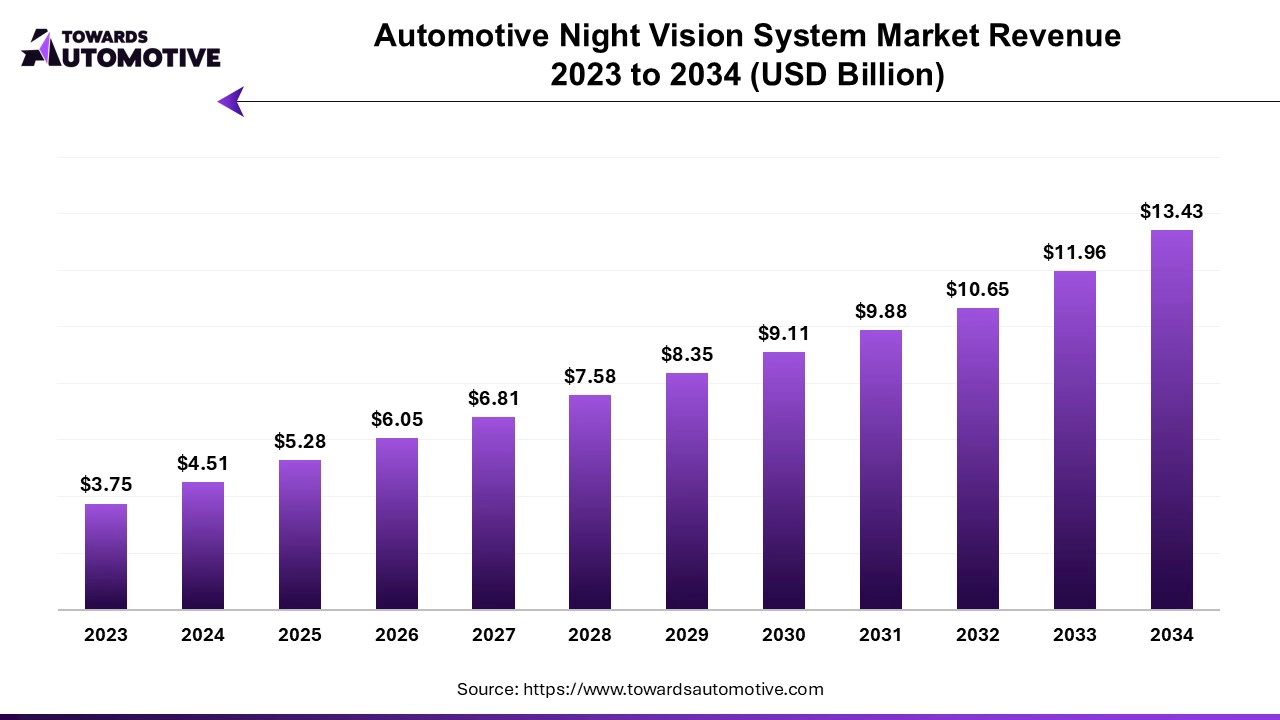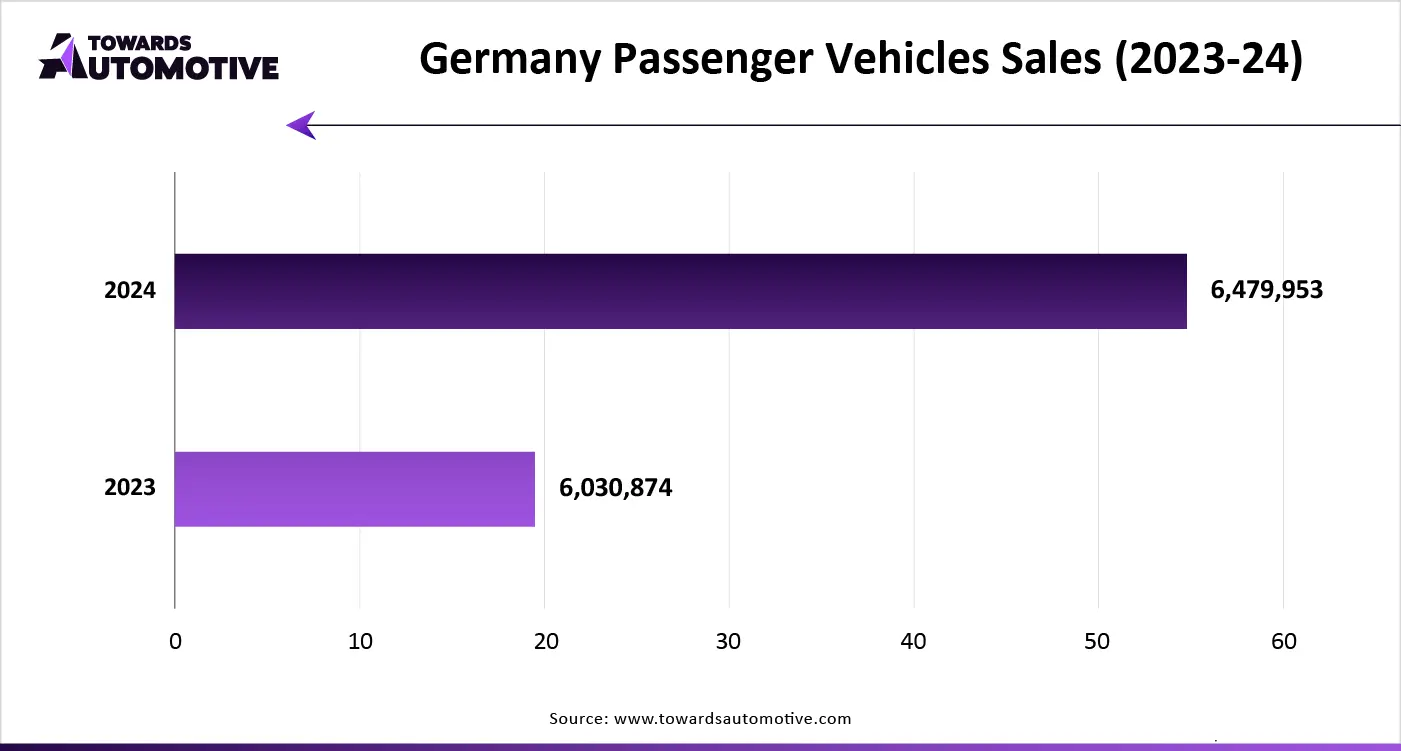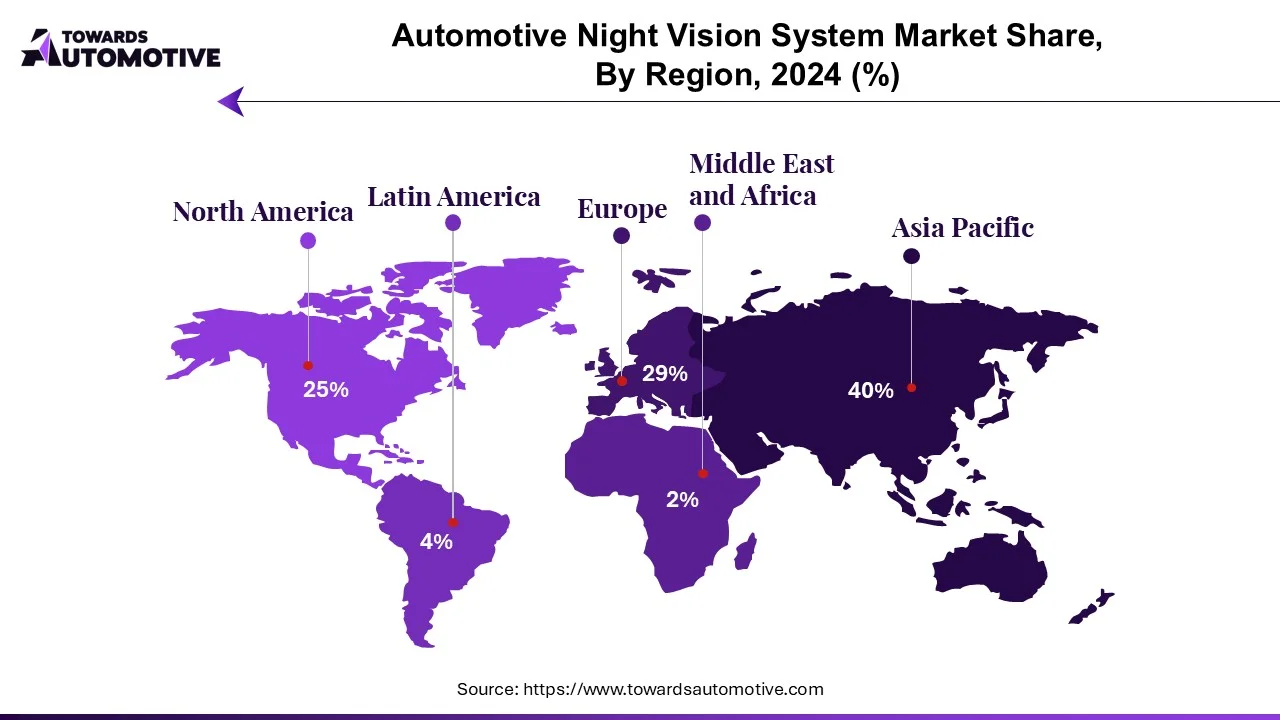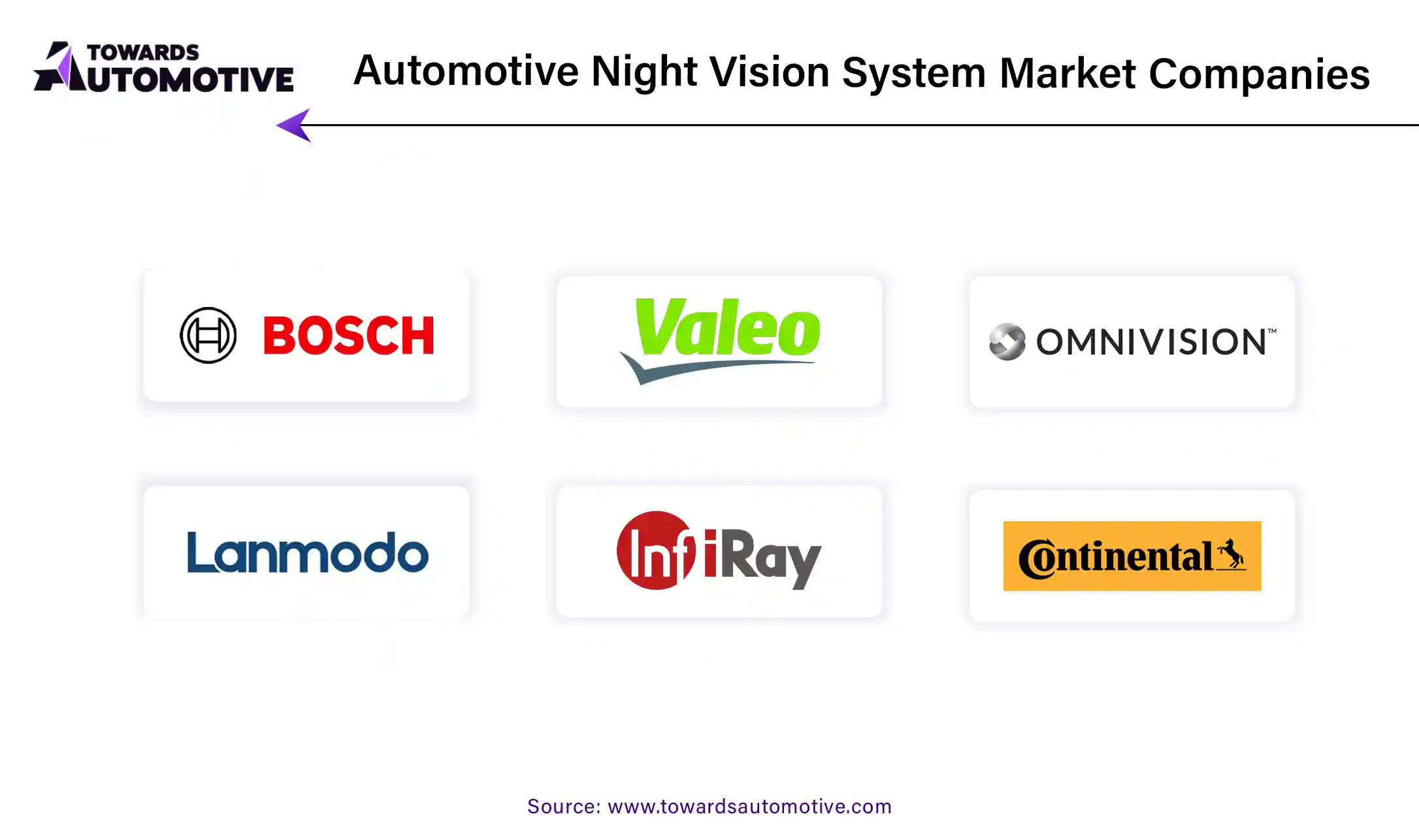October 2025
The automotive night vision system market is projected to reach USD 13.43 billion by 2034, expanding from USD 5.28 billion in 2025, at an annual growth rate of 12.3% during the forecast period from 2025 to 2034.

The automotive night vision system market is a crucial branch of the automotive industry. This industry deals in manufacturing and distribution of night vision systems for the automotive sector. There are several components of night vision systems including night vision camera, controlling unit, display unit, sensors and some others. These systems are integrated with different technologies such as far infrared (FIR) and near infrared (NIR). It is designed for numerous types of vehicles consisting of passenger vehicles and commercial vehicles. The rising use of night vision system in passenger vehicles has contributed to the overall industrial expansion. This market is projected to rise significantly with the growth of the automotive aftermarket industry around the world.

| Metric | Details |
| Market Size in 2024 | USD 4.51 Billion |
| Projected Market Size in 2034 | USD 13.43 Billion |
| CAGR (2025 - 2034) | 12.3% |
| Leading Region | North America |
| Market Segmentation | By Technology, By Component, By Vehicle and By Region |
| Top Key Players | Robert Bosch GmbH; Valeo; OmniVision; Lanmodo; InfiRay; Teledyne Technologies Incorporated; Teledyne FLIR LLC; |
The major trends in this industry consists of partnerships, growing production of automotives and rapid adoption of autonomous vehicles.
Several night vision developers are partnering with automotive component brands to develop advanced systems for enhancing automotive safety. For instance, in January 2024, Valeo partnered with Teledyne FLIR. This partnership is done for developing a night vision camera for enhancing the capabilities of ADAS. (Source: Valeo)
The growing production of vehicles has increased the demand for night vision system to improve the experience of night driving. According to the OICA, around 2376504 vehicles were manufactured in Spain during 2024.
(Source: https://www.oica.net/category/production-statistics/2024-statistics/)
The demand for driverless vehicles is increasing rapidly due to advancements in ADAS technologies along with growing emphasis on enhancing road safety. For instance, in May 2025, Tesla launched Model Y. Model Y is an autonomous vehicle that is equipped with advanced camera systems to enhance autonomous driving. (Source: Reuters)
The far infrared (FIR) segment held the largest share of the market. The rising use of FIR technology in automotive cameras for enhancing safety during night driving has boosted the market expansion. Also, rapid investment by automotive brands for developing FIR sensors to detect thermal radiation is likely to shape the industrial landscape. Moreover, continuous research and development activities related to FIR technology is further driving the growth of the automotive night vision system market.
The near-infrared (NIR) segment is anticipated to rise with a significant CAGR during the forecast period. The increasing application of NIR-based vision systems for improving night driving experience has driven the market growth. Also, numerous partnerships and collaborations among automotive companies and camera brands to develop NIR-enabled cameras is anticipated to propel the growth of the automotive night vision system market.
The night vision camera segment dominated this industry. The rising use of night vision camera in luxury vehicles to enhance automotive safety has boosted the market growth. Also, the increasing demand for advanced vision guided systems from the automotive sector along with integration of AI and IoT in night vision cameras is likely to shape the industry in a positive direction. Moreover, rapid investment by several camera manufacturers such as Invetac, Photonis, Elbit Systems Ltd, FLIR Systems and some others for developing advanced night vision camera systems for the automotive sector is anticipated to propel the growth of the automotive night vision system market.
The display unit segment is predicted to rise with a significant CAGR during the forecast period. The growing demand for superior in-vehicle experience has boosted the market expansion. Also, the increasing trend of using high-quality displays for operating numerous automotive applications such as navigation, infotainment, threat detection and some others is playing a vital role in shaping the industrial landscape. Moreover, the rising investment by automotive component manufacturers for developing advanced display units is projected to boost the growth of the automotive night vision system market.
The passenger vehicles segment led the industry. The rising demand for luxury SUVs in developed nations such as UK, U.S., Australia and some others has boosted the market expansion. Additionally, the growing sales and production of passenger cars in several countries such as Japan, India, China and some others is shaping the industrial landscape. Moreover, the increasing adoption of electric hatchbacks among middle class consumers is further accelerating the growth of the automotive night vision system market.
The commercial vehicles segment is likely to grow with a significant rate during the forecast period. The increasing use of advanced camera systems in autonomous trucks to enhance night driving has boosted the market growth. Also, rapid integration of display units in LCEVs along with technological advancements in commercial vehicle industry is contributing to the overall industrial expansion. Moreover, the rising usage of night vision camera systems in luxury buses is anticipated to drive the growth of the automotive night vision system market.

North America held the highest share of the automotive night vision system market. The rising sales and production of luxury cars in several countries such as the U.S. and Canada has boosted the market expansion. Additionally, numerous government initiatives aimed at enhancing automotive safety along with growing cases of road accidents is shaping the industry in a positive direction. Moreover, the presence of various market players such as Teledyne FLIR, HUDWAY, Visteon Corporation is expected to boost the growth of the automotive night vision system market in this region.
The U.S. night vision safety market is generally driven by the rising adoption of luxury SUVs along with technological advancements in electric vehicles. Moreover, the growing use of night vision cameras and display units in autonomous vehicles to enhance safety while driving is further accelerating the market growth.
Asia Pacific is expected to grow with the highest CAGR during the forecast period. The growing adoption of electric vehicles in several countries such as India, China, South Korea and Some others is driving the market growth. Also, technological advancements in automotive sector along with integration of advanced night vision systems in heavy commercial vehicles is contributing significantly to the overall industrial expansion. Moreover, the presence of several automotive brands such as Tata Motors, BYD, XPENG, Toyota, Mitsubishi and some others is driving the growth of the automotive night vision system market in this region.
China and Japan contributes significantly in this region. In China, the market is generally driven by the growing sales of electric trucks along with availability of essential metals used in the production of night vision systems. In Japan, the growing sales of commercial vehicles coupled with technological advancements in robotic industry has further added to the industrial expansion.

The automotive night vision system market is a rapidly developing industry with the presence of a several dominating players. Some of the prominent companies in this industry consists of Robert Bosch GmbH; Valeo; OmniVision; Lanmodo; InfiRay; Teledyne Technologies Incorporated; Teledyne FLIR LLC; and some others. These companies are constantly engaged in developing night vision systems for the automotive sector and adopting numerous strategies such as business expansions, acquisitions, collaborations, joint ventures, launches, partnerships, and some others to maintain their dominance in this market.
By Technology
By Component
By Vehicle
By Region
October 2025
October 2025
October 2025
October 2025
We offer automotive expertise for market projections and customizable research, adaptable to diverse strategic approaches.
Contact Us